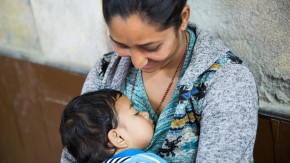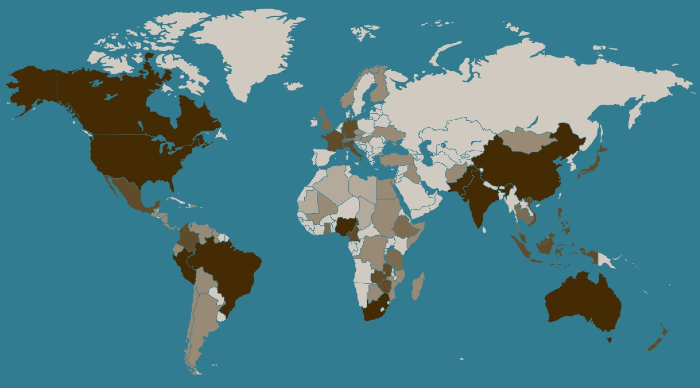Banking Human Milk
- Ellen Piwoz, Mar 9, 2020
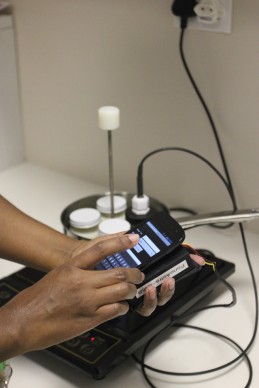
According to the World Health Organization (WHO), mothers should start breastfeeding in the first hour after birth and feed their babies nothing but breast milk for the first six months of their lives. A diet of nothing but breast milk, in addition to keeping babies from being exposed to pathogen-tainted food, can give them all the nutrients they need and provide them with anti-infectious and anti-inflammatory agents, growth factors, and prebiotics. Breast milk also contains antibodies against infectious diseases like pneumonia and diarrhea, two major causes of child mortality around the world. For babies born prematurely, underweight, or ill, breast milk is all the more beneficial.
But at least 40% of premature babies born in poor countries have no access to their mothers' milk, because their mothers are ill, for example, or have died in childbirth, or because they're separated from their mothers for other medical reasons. For babies whose birth weight is low, the WHO recommends using pasteurized donor human milk. The machines used to pasteurize donor milk, though, are incredibly expensive - they can cost up to $100,000, far more than the entire budget of a rural health center in a poor country. Health workers have always done the best they could; some, for example, have pasteurized donor milk by heating it in boiling water. But by doing so without a monitoring system, they risk underheating the milk, leaving potential contaminants alive, or overheating it, destroying the beneficial antibodies in the milk and increasing the risk of pneumonia and infectious diarrhea.
When Dr. Kiersten Israel-Ballard, who had been working on helping HIV-positive mothers breastfeed safely, saw this in health centers in South Africa, she assumed there had to be a less expensive way for them to pasteurize milk. She couldn't find one, though, so, with the help of a Grand Challenges Explorations grant to explore new nutritional approaches for healthy infant growth, she invented it instead. She had already designed a simple way for HIV positive mothers to heat their breast milk so that the virus wouldn't be transmitted to their babies, so she got to work making that method more rigorous. The result was FoneAstra, a small, inexpensive pasteurizer with a sensor that monitors the temperature of a hot-water bath. Meanwhile, thanks to computer scientists at the University of Washington, a mobile phone app connected to the sensor walks a healthcare worker through every step of the pasteurization process, from donation to storage.
That in itself was an important advance, but while working to solve the narrow problem of inexpensive pasteurization, Dr. Israel-Ballard discovered a much bigger problem - a gap that the global health community hadn't even realized was there. A follow-on grant helped her work with the Human Milk Banking Association of South Africa and the KwaZulu-Natal Ministry of Health to establish small-scale, FoneAstra-based milk banks in five hospitals as part of a broader provincial breastfeeding campaign; in doing so, she realized just how little attention donor milk got from the global health community. Nutrition funders and policy-makers, she discovered, tend to focus on breast-feeding in healthy communities. Newborn-care people, meanwhile, tend to focus on more immediate medical conditions like respiratory care, paying less attention to breast-feeding in low-birth weight and vulnerable newborns. There were no global guidelines for setting up a human milk bank, no standardized training on using one, and no repository of best practices. Nobody was even keeping comprehensive track of how many babies around the world needed donor milk. So she got to work.
She took her cue from Brazil, which has the most innovative donor-milk program in the world. Many human milk banks are independent systems in hospitals: a room or set of rooms, like a pharmacy, whose only function is to process and distribute donor milk. But Brazil has taken a different approach, integrating over 200 "houses of lactation" into newborn care wards all over the country. Houses of lactation started as part of a huge push by Brazil to reduce infant mortality: officials trained doctors and staff and conducted publicity campaigns aimed at parents to help them understand breastfeeding as a central part of childbearing. Houses of lactation were marketed not as clinical dispensaries but as centers where mothers and their children could be supported medically, physically, and emotionally, whether it was in the form of milk donation, breastfeeding training, childrearing support, or just a friendly environment to play. Brazil made milk banks places where nursing mothers wanted to go. As a result of this and other innovations in infant and maternal health, in the last thirty years the mortality rate of Brazilian infants has fallen by almost 75%.
As soon as she saw this, Dr. Israel-Ballard realized that integration was the key. Since then, she's worked with stakeholders and ministries of health all over the world to develop the first set of global operational standards and to help set up national guidelines on breast milk banking in ways that don't just provide milk to premature, underweight babies - by taking their cue from Brazil's success, strengthening lactation support for mothers of these babies and turning milk banks into places mothers want to go to, they actually significantly increase breastfeeding rates in the community. Problems in global health are so complex that it's impossible for one person to be an expert in all of them. That's why programs tend to focus on one area. But neither babies nor mothers are siloed like that - they need support that meets both of them, as a unit, wherever they are. Dr. Israel-Ballard's goal now is for the nutrition and newborn-care communities to develop an integrated approach that provides exactly that.
Explore More Grand Challenges Explorations (2008-2018)
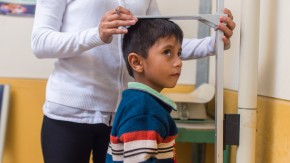
Diagnosing Leaky Gut
Mar 9, 2020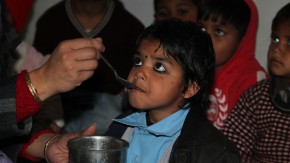
Diagnosing Pneumonia
Mar 9, 2020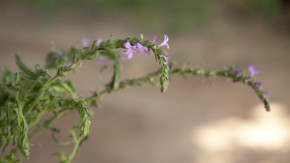
Eliminating Witchweed
Mar 9, 2020